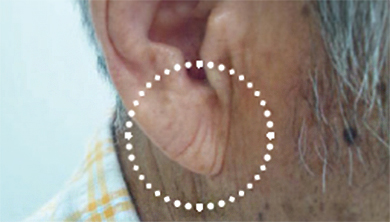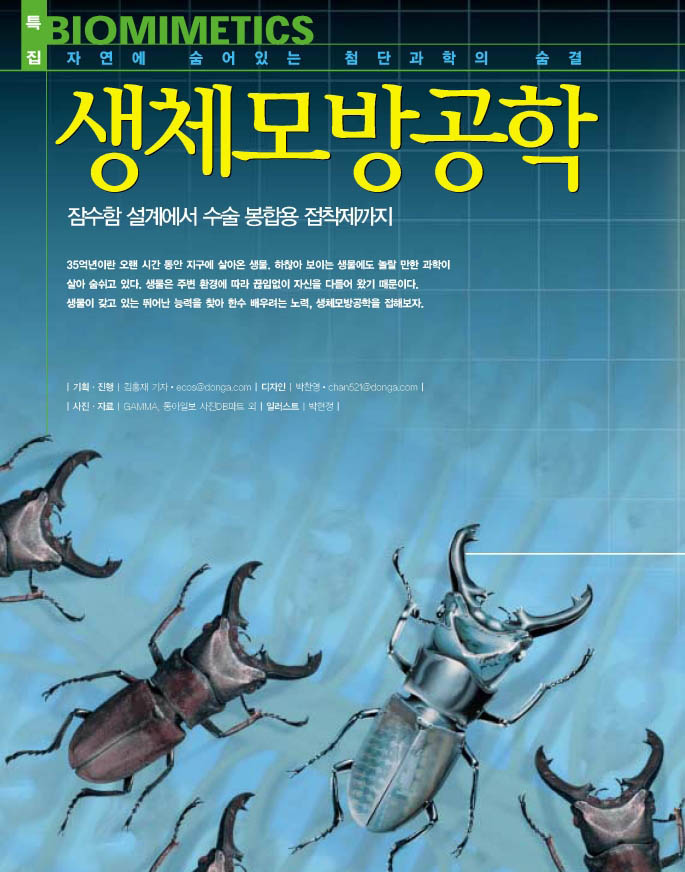약 1천년 전에 뉴멕시코주의 어느 아메리카 원주민 부족은 유럽의 천문학자들이 놓쳤던 별 하나를 보았으리라는 추측이 있다.
이 추측은 약 50년전에 발굴된 그릇을 연구한 텍사스주립대학의 랠프 로빈스씨와 러셀 웨스트모랜드씨가 믿고 있는 바다.
의문의 그 별은 초신성이었으며 오래전, 지난 1054년도에, 미국의 독립기념일을 미리 축하하는 하늘이 그해 7월 4일 휘황찬란한 빛을 발하며 폭발시킨 별이기도 하다. 그것은 황소자리가 있는 하늘 높은 곳에서 유례없는 광채를 발하며 불길을 내뿜었다. 또한 그 광채의 위치가 황도내의 한 부분이었기 때문에 점성가들에겐 특별한 관심거리였으며 유럽전역에서 눈으로 확인할 수 있었다. 중세의 천체관측가들은 하늘의 그 지역을 관찰했을 것임에 틀림없다.
그 별을 놓치기란 어려웠을 것이다. 해와 달을 제외한 하늘의 그 어느 별보다도 밝았기 때문이다. 눈부신 저녁별인 금성보다도 두배 내지 세배가량 밝았다. 너무 빛났으므로 23일 동안은 낮에도 볼 수 있었으며 그 별이 빛을 잃어 완전히 시야를 떠나기 전까지 밤엔 그 별빛에 의한 그림자가 생길 정도로 2년 가까이 빛났다.
그럼에도 불구하고 유럽에선 아무도 그 별을 본사람이 없다. 아니, 적어도 유럽인들이 그 별을 발견했다는 보고는 현재까지 없다(비록 그 별에 대해 언급한 이탈리아의 기록문이 있기는 하지만).
그러나 그 별의 관찰에 대한 그럴싸한 기록이 없다면 그와 같은 별이 하늘에 존재했다는 사실을 어떻게 알 수 있다는 말인가?
우선, 그 별의 거대한 폭발은 천문학자들이 '게성운'이라고 부르는 파편집단을 남겨 놓았다. 그 성운은 아직도 확장되고 있으며 그 확장속도를 이용한 역계산 방법으로 천문학자들은 그 폭발이 1054년도경에 시작됐다고 믿게 됐다.
그 별에 대한 기록이 없는 이유 중의 하나로 당시 유럽이 중세의 어둠을 겨우 헤치고 나온 시기였다는 점을 꼽을 수 있다. 따라서 소수의 사람들만이 천체 현상을 연구하고 기록을 남겼다.
그 당시 유럽은 천문학 연구의 중심은 아니었다. 그때의 세계기술 선도국은 중국이었고, 수세기동안 중국의 천문학자들은 모든 새로운 별의 출현시기와 천체상의 정확한 위치를 아주 주의깊게 기록하였다. 그들은 지금은 게성운에 위치하고 있는 바로 그 1054년의 특별출연자를 보고했다.(이 별은 중국인들이 발표한 유일한 신성은 아니다. 중국의 천문연감은 고대와 중세에도 약 50개의 신성을 기록하고 있다.) 일본의 천문학자들 역시 1054년도에 나타났던 밝은 별의 출현을 기록하고 있다.
그러나 1054년도의 초신성은 충분히 빛났으므로 발전된 기술을 지닌 나라의 천문학자들에 의해서만 기록될 필요는 없었다.(비교적) 원시적인 사람들까지도 계절의 변화를 지배하는 천체의 현상을 알아야만 했기에 하늘의 특별한 징후를 지켜보아 왔다.
'고대 천문학'이라고 일컬어지는 원시시대의 천문학에 관한 연구는 최근에 중요하게 부각되고 있다.
고대 천문학은 영국 남서부의 거대한 원형을 이루는 돌기둥들과 관련하여 1960년대부터 뉴스거리가 됐다. 어떤 사람들은 모든 돌기둥들이 제 위치에 놓이도록 재건한 뒤 일부 돌기둥을 따라 관찰하노라면 하지날 떠오르는 태양의 위치를 알아볼 수 있다고 믿게 됐다. 한 이론에 따르면 이러한 바위의 배열은 석기시대에 월식을 예측할 수 있는 관측소의 역할을 담당했을지도 모른다는 것이다.
비슷한 예로서, 미대륙에서도 하지날 아침에만 햇빛이 갈라진 틈으로 새어들어와 내부를 조명해주는 장소들이 여럿 발견됐다.
로빈스씨와 웨스트모얼랜드씨는 뉴멕시코 주에서 발굴한 그릇을 연구해 오고 있다. 그 그릇의 중심에는 토끼 한마리가 새겨져 있는데 이는 미국 원주민들이 달의 어두운 부분을 토끼모양이라고 상상한 것으로 보아(마치 서양의 전통에서는 그 부분이 가시덤불을 쓰고 있는 사람이라고 보아 왔듯이) 달을 표현했다고 보아도 옳다.
바로 그 토끼 밑에는 어두운 원과 사방으로 펼쳐지는 광선이 있는데 이것은 별을 상징하는 것처럼 보인다. 지난 1054년에 초신성이 처음 출현했을 때 초생달은 근처에 있었다. 로빈스씨와 웨스트모얼랜드씨는 토끼아래의 별이 바로 그 초신성이라고 믿고 있다. 나이가, 그 별로부터 뻗어 나오는 23개의 광선이 그려져 있는데 이는 낮에도 관측 가능했던 23일 동안을 표현하고 있는지 모른다는 것이다.
끝으로, 시대측정결과 그 그릇은 서기 1000년에서 1070년 사이에 만들어진 것으로 나타났으니 시기마저 딱 맞아 떨어지는 셈이다. 이 모든 논리는 하나하나가 완벽한 설득력을 갖지는 못하지만… 글쎄, 가능할 수도 있지 않을까?
It may be that, almost a thousand years ago, a tribe of Native Americans in New Mexico saw a star that European astronomers unaccountably missed. At least that is something that Ralph Robbins and Russell Westmoreland of the University of Texas now believe, after studying a burial bowl that was uncovered about 50 years ago.
The star in question was a supernova, a star that exploded in a blaze of brilliance in 1054, and, possibly, on July 4 of that year in a premature celebration of the United States' Independence Day. It blazed out in unexampled brilliance, high in the sky in the constellation Taurus the Bull, so that it was clearly visible all over Europe. Since it was part of the zodiac, that portion of the sky was of particular interest to astrologers. Medieval sky — watchers must have been studying the region. The star would have been hard to miss. It was brighter than any object in the sky, other than the sun or moon. It wa two or three times brighter than Venus, the glorious evening star. It was so bright that it was visible in the daytime for 23 days, and at night for nearly two years before it faded away and disappeared - - at its brightest it actually cast a shadow.
Yet no one in Europe saw it; or at least no European report of it has been discovered to this day (although there is a notation in an Italian manuscript that might refer to it).
But if there was no good record of its sighting, how do we know that such a star was ever in the sky?
For one thing, the colossal explosion of that star left a cloud of debris behind that astronomers call the "Crab Nebula." It is still expanding, and from the rate of its expansion, astronomers can calculate backward and determine that the explosion began around 1054.
One of the reasons that there were no European reports on the star may have been that Europe was just beginning to emerge from the Dark Ages at that time, and astronomy was a low ebb. Few people were studying the sky and reporting what they saw.
At the time, Europe wasn't the center of astronomical research. The world leader in technology then was China, and for centuries, Chinese astronomers had carefully recorded the time of appearance of any new star and the exact portion of the sky in which it appeared. They reported a "guest star," that appeared in 1054, in the spot now occupied by the Crab Nebula. (Nor was this the only nova they reported — — the astronomical annuals of China recorded about 50 guest stars during ancient and medieval times.) Japanese astronomers also reported the appearance of the bright star of 1054.
The supernova of 1054 was sufficiently spectacular, however, that it need not have been reported only by astronomers in nations with advanced technologies. People who were (relatively) quite primitive had to be aware of phenomena in the sky that governed the changing seasons and would have watched for unusual signs.
The study of the astronomical lore of primitives, called "archeoastronomy"(ancient astronomy), has recently become important.
Archeoastronomy made headlines in the 1960s in connection with Stonehenge, the impressive circles of giant stones(some of them fallen) in southwestern England. Reconstructions of what it must have looked like when all the stones were in place have led some people to believe that sighting along certain stones located the rising sun on the day of summer solstice. The rock arrangements may have served as a Stone Age observatory capable of predicting lunar eclipses, according to some theories.
Similarly, places were found in the American continents where sunlight could penetrate a crevice in such a way that only on the morning of the summer solstice, it would illuminate the interior in a particular way.
Robbins and Westmoreland have been studying a burial bowl in New Mexico. At its center is the figure of a rabbit, which may well signify the moon, for many Native American tribes imagine that the moon's dark markings represent a rabbit (just as in Western tradition they represent a man with a thorn bush.)
Under the rabbit is a dark circle with rays emerging in all directions, and this seems to symbolize a star. When the 1054 supernova first appeared, the crescent moon was in the sky nearby. Robbins and Westmoreland believe that the star near the rabbit signifies that. Moreover, there are 23 rays emerging from the star and that may represent the 23 days it was visible in the daylight.
Finally, dating procedures indicate the bowl was made between A.D 1000 and 1070, which put it at the right time. None of this is entirely persuasive - - but it is possible, isn't it?
(c) 1990, Los Angeles Times Syndicate
이 기사의 내용이 궁금하신가요?
기사 전문을 보시려면500(500원)이 필요합니다.
1990년 09월 과학동아 정보
🎓️ 진로 추천
- 천문학
- 역사·고고학
- 문화인류학

















